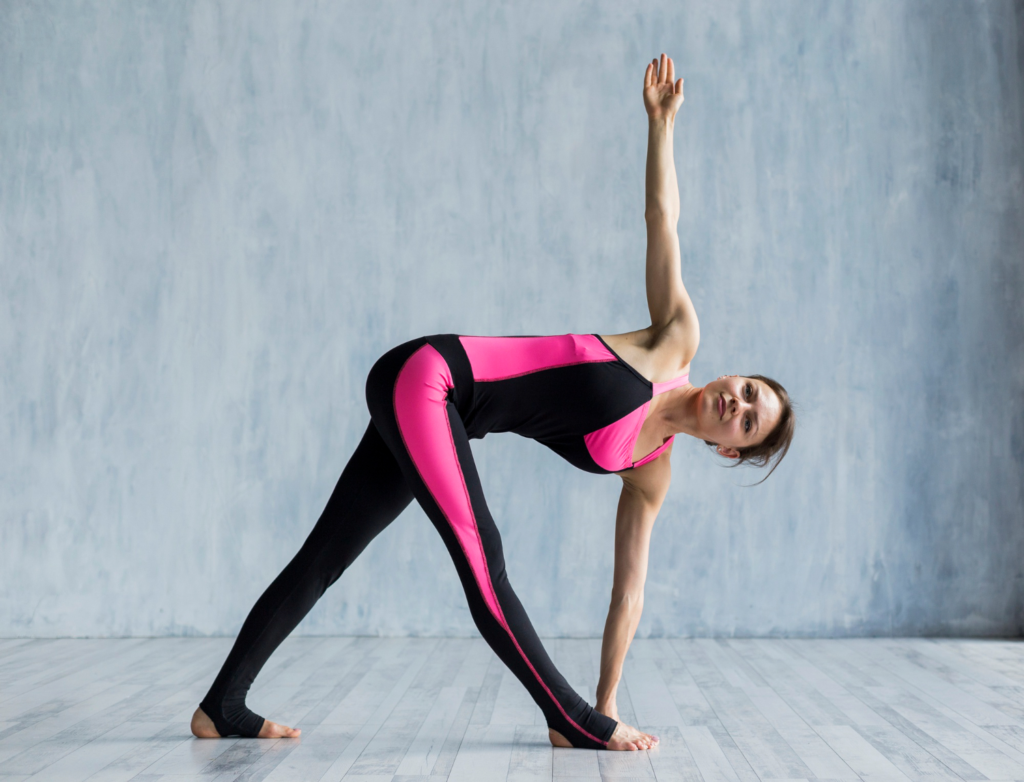The Origin and Meaning of Trikonasana
Trikonasana, also known as Triangle Pose, is a fundamental yoga asana that has its roots in ancient Indian tradition. The word ‘Trikonasana’ derives its meaning from the Sanskrit words ‘Trikona’ which means ‘triangle’, and ‘asana’ which means ‘pose’. As the name suggests, this asana involves a triangular shape created by the body. It is believed to have been practiced for centuries and holds great significance in the practice of yoga.
In yoga philosophy, the triangle is considered a powerful symbol representing stability, balance, and harmony. The practice aims to cultivate these qualities both physically and mentally. By aligning the body in a triangular shape, we create a strong foundation and open ourselves to the flow of energy.

Physical Benefits of Trikonasana
Trikonasana offers a wide range of physical benefits that contribute to overall well-being. Some of the key benefits include:
– Stretches and strengthens the legs, hips, and hamstrings, improving flexibility and mobility.
– Works on the abdominal muscles and aids in digestion.
– Opens the chest and shoulders, improving posture and breathing.
– Relieves backaches and sciatica by strengthening the muscles of the lower back.
– Enhances spinal flexibility and alignment, reducing the risk of spinal disorders.
Regular practice of Trikonasana can help improve body awareness, increase muscle strength, and promote better physical health.
Mental and Emotional Benefits of Trikonasana
In addition to its physical benefits, Trikonasana also has several mental and emotional benefits. Some of these include:
– Stress relief and relaxation
– Improves focus, concentration, and mental clarity.
– Promotes a sense of grounding and stability.
– Enhances self-confidence and self-esteem.
– Stimulates the Manipura chakra, which is associated with personal power and transformation.
By practicing it, we can cultivate a sense of balance and harmony in both our body and mind, leading to improved mental and emotional well-being.
Key Tips for Practicing Trikonasana
While it is generally safe for most people, it is important to practice with proper alignment and awareness. Here are some tips to practice it safely:
– Begin by warming up the body with gentle stretches and movements.
– Keep the feet firmly grounded and maintain a stable base.
– Engage the core muscles to give support to the spine and avoid injuries or strain.
– Extend the spine and reach towards the side, keeping the shoulders relaxed.
– Avoid overstretching or forcing the body into the pose. Listen to your body and go only as far as comfortable.
– Modify the pose if needed by using props such as blocks or a chair for support.
Remember to always approach the practice with mindfulness and respect for your body’s limitations. If you have any existing medical conditions or injuries, it is advisable to consult a qualified yoga instructor or healthcare professional before attempting it.
Incorporating Trikonasana into Your Daily Routine
To experience the full benefits of Trikonasana, it is recommended to incorporate it into your daily yoga routine. Here are some tips for the same:
– Begin by practicing Trikonasana as part of a warm-up sequence to prepare the body for deeper stretches and poses.
– Gradually increase the duration and intensity of your practice as you become more comfortable and flexible.
– Combine it with other yoga asanas that complement its benefits, such as Utthita Parsvakonasana (Extended Side Angle Pose) or Virabhadrasana II (Warrior II Pose).
– Explore variations of Trikonasana to challenge yourself and deepen your practice.
– Practice it in a peaceful and quiet environment to enhance its meditative qualities.
By making it a regular part of your yoga routine, you can unlock its numerous benefits and embark on a transformative journey of self-discovery and well-being.


1 thought on “Trikonasana: The Triangle Pose”